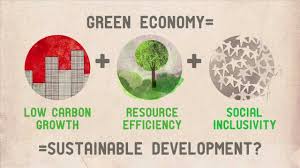
The Green Growth Approach
Northern Ireland’s Transport Strategy recognizes that sustainable transport can actually support economic growth rather than hinder it. The strategy identifies several mechanisms:
Efficient Business Connections: The strategy emphasizes providing businesses with “efficient and reliable connections, particularly to our gateways” while reducing carbon impact. Since almost all freight in Northern Ireland moves by road, maintaining good connectivity for goods movement remains essential for economic growth.
Smart Parking Management: Interestingly, the strategy notes that “inappropriate supply of car parking, particularly long-stay commuter parking, can act as an impediment to economic growth.” This suggests that reducing certain types of car use can actually boost economic activity by improving urban environments and reducing congestion.
Modal Shift Opportunities: With only 3% of total distance traveled currently on public transport and an average journey length of around 6 miles, there’s significant potential to shift trips to more sustainable modes without harming economic activity.
How Strangford Lough Crossing (SLC) assists these aims
The detailed analysis from your referenced source provides compelling evidence that the Strangford Lough Crossing would significantly contribute to car mile reduction while supporting economic growth:
Substantial Car Mile Reductions: The analysis demonstrates net reductions across three scenarios:
- Conservative: 303,343 miles/year saved (68.3 tons CO2)
- Realistic: 1,493,963 miles/year saved (336.1 tons CO2)
- Ambitious: 2,903,975 miles/year saved (653.5 tons CO2)
The Mathematics of Efficiency: By replacing the current 47-mile detour route with a 1.5-mile bridge crossing, each trip saves 45.5 miles. This creates immediate efficiency gains that support both environmental and economic objectives.
Economic Benefits Through Accessibility: The analysis shows that improved connectivity would enable:
- More efficient business deliveries and services
- Better access to the Down GAA Centre of Excellence at Ballykinlar, supporting sports tourism and community economic activity
- Enhanced tourism potential to attractions like Exploris Aquarium and Down Cathedral
- Reduced operational costs for emergency services and healthcare access
Behavioral Shift Analysis: The comprehensive review of 25 different traveler types shows that 20 out of 25 would reduce their car miles, with many shifting to shared transport (like coaches to GAA events) or active travel options.
Key Success Factors
Coach and Shared Transport: The analysis highlights how local coach businesses could significantly reduce car usage, particularly for events at Ballykinlar, potentially saving 13,650-22,750 miles annually through shared transport to GAA activities.
Active Travel Integration: The bridge design could incorporate cycling and walking infrastructure, enabling some trips to shift entirely away from car use.
Strategic Timing: The 24/7 accessibility would eliminate the need for lengthy detours during ferry off-hours, making sustainable transport choices more viable.
Addressing Skepticism
The analysis directly refutes claims that the bridge would increase overall car miles, providing detailed calculations showing that while some new trips would be generated (2,190-105,850 miles annually), these are far outweighed by the savings from eliminated detours. The author notes that critics “offer no data, rendering their viewpoint speculative.”
Climate Compliance
The projected CO2 savings of 68.3-653.5 tons annually would contribute meaningfully to Northern Ireland’s Climate Change Act (2022) commitments, while the economic benefits from improved connectivity support the region’s prosperity.
The Strangford Lough Crossing appears to exemplify the “green growth” approach outlined in TS2035 – providing infrastructure that simultaneously improves economic connectivity and reduces environmental impact through more efficient travel patterns.
